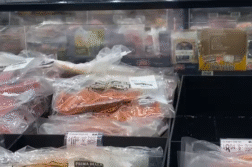Orlando, Fla. (Ivanhoe Newswire) — TikTok is captivating teens in the U.S. A survey by Pew Research center shows 58 percent of kids ages 13 to 17 say they go to the site at least once a day. Seventeen percent say they are on it almost constantly. While much of the content is all about fun some of it can be dangerous or even deadly.
From cute dogs, new moves, hot fashion and more TikTok is all the rage for teens.
TikTok challenges often go viral and while some can be funny…others are unsafe.
Some of the most dangerous include the blackout challenge. People are encouraged to choke themselves until they blackout. The chroming challenge … also known as #Whiptok. Users inhale toxic fumes to get high. Not only can it be deadly, it’s also addictive. The Skullbreaker challenge involves three people. The middle person is told they are taking a jumping photo while the two others kick the jumpers’ legs out from under them. It’s resulted in spinal cord injuries and even paralysis. Another popular challenge, the dragon breath challenge. It has kids dipping their food in liquid nitrogen, causing vapor to come out their mouth and nose. It can cause damage to internal organs and breathing difficulties.
So, what can parents do to keep their kids safe? TikTok offers some parental controls such as limiting content and filtering comments.
There’s also a family pairing option, allowing parents to link their account to their child’s. Daily screen time, search options and messaging can all be supervised.
Experts say parents should also try to be aware of trending challenges and videos … and talk to kids about things that could be dangerous.
Contributors to this news report include: Lindsay Dailey, Producer; Bob Walko, Editor
To receive a free weekly email on Smart Living from Ivanhoe, sign up at: http://www.ivanhoe.com/ftk
Sources:
https://www.pewresearch.org/internet/2023/12/11/teens-social-media-and-technology-2023/
https://www.independent.co.uk/tech/tiktok-blackout-challenge-deaths-b2236669.html
https://www.baltimoresun.com/2024/01/24/protect-kids-social-media/
https://www.yahoo.com/news/blackout-challenge-latest-deadly-tiktok-180100402.html
https://support.tiktok.com/en/safety-hc/account-and-user-safety/user-safety



